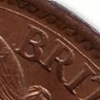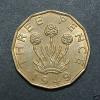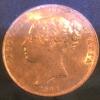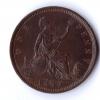Curiously parallel to my business, all this.
I restore old studio recording consoles, all one make, British, from 1968 to 1980.
I've collected all the parts and console bits I can find for 25+ years.
The prices over the last five years have trebled, as people that can't find places to invest their cash
join in the feeding frenzy, looking for investments. The good stuff rose first, followed a couple of years later,
the average stuff. A nice console now can be £250K......
I'm happy, since my stock of consoles and console parts will give me a pension.
However, for example, consider my stock of old audio transformers.
What used to be £10 is now £250. Fantastic, you would assume, BUT I now control the world price.
If I wanted to sell 300 to buy a really nice car, I would get £100 each, or less,
since the _perceived_ rarity is what is keeping up the price.
So- what if collectors of good rare pennies sensed that interest rates were going to rise,
Swiss banks no longer charge negative interest rates......they'll sell, and all the rare stuff that has never been counted,
like F169's all appear at once, and people find that there are actually 50 of them, and the new 30 are all EF+......
Either, collectors buy them up at a good price and flood the market with their old average ones, lowering the price of examples in Fine,
or, the flood of EF examples lowers the price of the EF ones.........
Maybe.
 Coinpublications.com
Coinpublications.com






